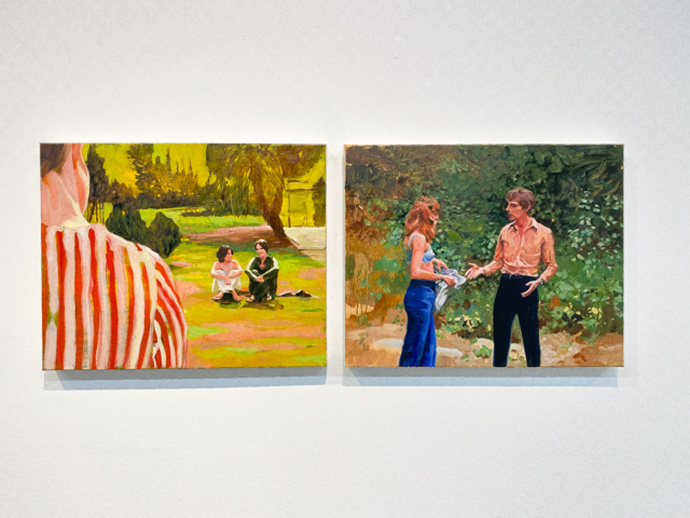Pan American Art Projects ‘Abcdefg, Collective”
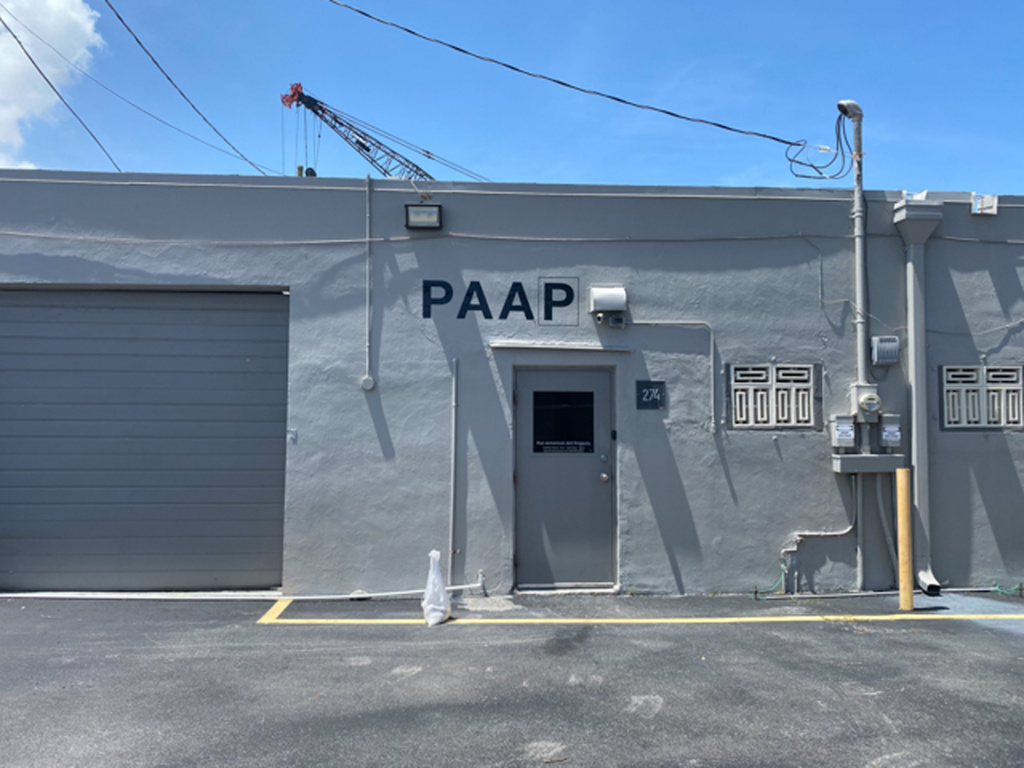
Pan American Art Projects is excited to announce ABCDEFG, a group show featuring the works of mainly
Miami based artists Paul Amundarain, Rigoberto Diaz, Filio Galvez, Delvin Lugo, Marlon Portales, Jorge Rios,
and Leticia Sanchez Toledo. ABCDEFG will be on view from June 25 to August 20, 2022, with an opening
reception for the artists on Saturday, June 25, from 6 to 9 pm.
ABCDEFG brings together seven practices through which artists articulate their own forms of commons
through painting. In this exhibition, different artistic manifestations coexist, such as painting in its most
academic representation, an expanded and contemporary version, as well as non-traditional interpretations
involving drawing, and installation.
This show is a frivolous ode to the complexity of the culture of our days, its meta definitions, hypersensitivity,
and automation: it is a call to attention to the details of life, to what we are. It is why we quote Rosalía’s song
“ABCDEFG”, where the singer returns to the primitive and simple way of associating the letters of the
alphabet with words, expressions, and events that are in popular slang. She omits letters, she makes up
words or “miswrites” them. It is a break from over-thinking the conceptual searching in life, which looks more
beautiful the simpler it is.
ABCDEFG will be accompanied by scheduled programming of movie screenings curated by Filio Galvez.
–
“ABCDEFG” – Rosalía
A de alta, altura, alien
B de bandida
C de coqueta
D de dinamita
E de expensiva, emperatriz, enigma, enterada
F de Flux Aeon
G de guapa
H de hondura
I de inteligencia artificial
J de jineta
M de motomami, motomami, motomami
Motomami, motomami
N de “Ni se te ocurra ni pensarlo”
O de orquídea
P de patrona
Q de qué reinona
R de racineta, racineta, rango
Racineta, rango
S de sata
T de titánica
U de ultrasonidos
V de vendetta
W de Willy Colon
De Winterfall también
X de “Te despejo la X en un momento”
Y de yenes, de yantas
Y Z de zarzamora, o de zapateao’, o de zorra
también
ABOUT THE ARTISTS

PAUL AMUNDARAIN
Born in Caracas in 1985, Paul Amundarain began studying Architecture, but soon became interested in
producing art, and instead pursued different design and sculpture workshops where he could develop his
creative impulse. He has exhibited largely in Maracaibo and Caracas in collective shows and local art fairs,
and has had four solo exhibitions in Venezuela, at Viloria Blanco Gallery in Maracaibo, and Parenthesis
Gallery in Caracas. Paul Amundarain lives and works between Caracas and Miami.
Paul Amundarain belongs to a generation that received the legacy of the grid already deconstructed. The grid
allowed modernity to be structured and art to be reorganized. His research tries to solve social problems
using technological processes as a record of his own experiences.
His largest series of assemblages titled Urban Skins and Anarchical Skins are a visual synthesis of what
Caracas looks like from above, intending to analyze and reflect upon the social circumstances and irrationality
that prevail in this chaotic urban development. Amundarain departs from the overhead shots taken from the
city’s barrios (slums) as a model and dissects its landscape formed by the geometric shapes of the roofs of
millions of ranchos (favelas). He uses Aluminum triangle and square blade-like shapes that overlap the
bi-dimensional surface and produces volumetric assemblages that suggest not only the violence but also
the unruly and massive informal habitable solutions of poverty.
In other bodies of work, Amundarain is reflecting upon Venezuela’s conflictive street violence to generate
paintings, sculptures, and installations, thinking about the unfortunate popular culture icons of violence in the
context of their own reality, in which the whole city becomes a crime scene at large. It is quite common in
today’s Caracas to find its urban landscape scarred with physical evidence of this violence, such as the
traces left from bullets in street signs, protection barriers on roads, and damaged infrastructure that present
vestiges of thuggery. In his series Impact, Amundarain perforates aluminum surfaces painted in gold with real
bullets, or as in Formal Subtraction where he removes highway safety barriers that have been damaged by
car crashes or bullets, and alters them into sculptures, not before intervening them with paint or chroming
their surfaces.
With his work, Amundarain is commenting on the social scenario of a system that has progressively fallen
on hard times, using a visual strategy that pertains to Venezuela ́s rooted art historiography within the
disciplinary boundaries of geometric abstraction
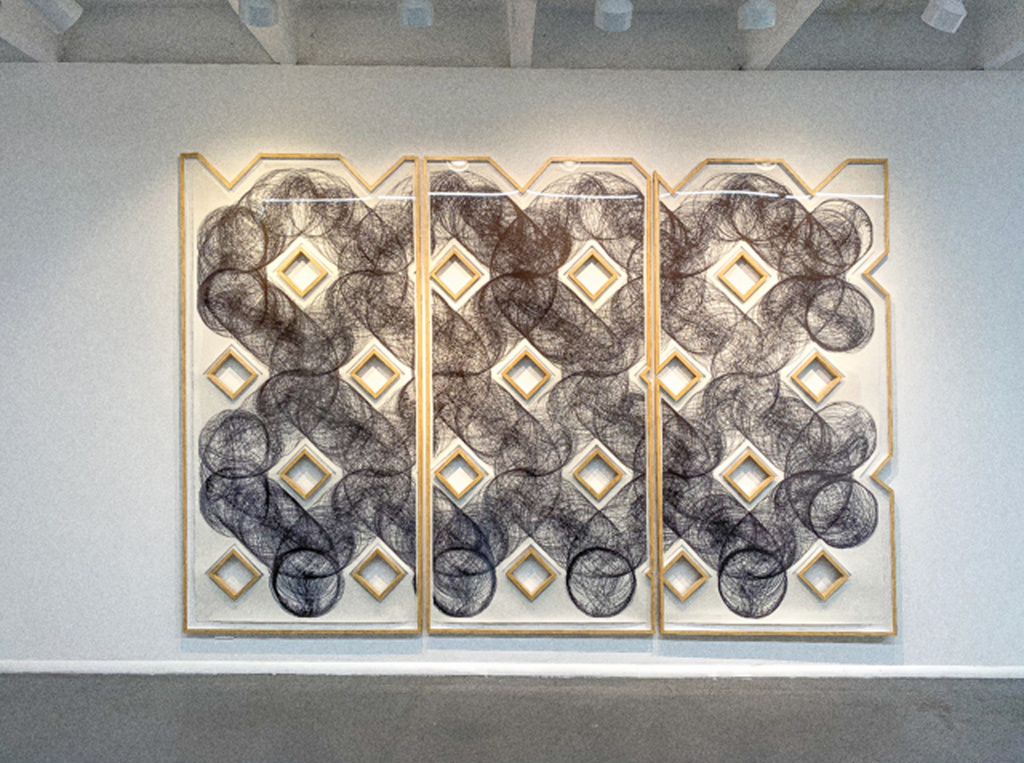
RIGOBERTO DIAZ
Rigoberto Diaz’ artistic proposal is a means of research and experimentation, an analytical instrument that
dialogues about the entities where it develops and new forms of relationships are created. Each space is a
world of dissimilar analogies which he is interested in investigating to create a work that links with the
passer-by and the environment, obtaining a flow of data between the work and the public. Diaz’ conceptual
and formal codes are within and outside the limits of the installation, public interventions, Site Specific,
photography and works with a procedural nature. Using a group of practices allows him to organize fieldwork in the established area. The study of physical and symbolic space is a constant in his work, where he
develops works that investigate memory, power, and waste as traces of behaviors that inhabit a space.
In his latest series, Location Intelligence, he makes drawings with Roomba vacuum cleaners based on their
geolocation. Intervention in private spaces where they are used as limits to create localization patterns and
pre-design of the area. Artificial intelligence creates patterns of behaviors to delimit obstacles. These vacuum
cleaners use Location Intelligence: it is the process of obtaining a meaningful view of geospatial data
relationships to solve a particular problem – the ability to understand or learn, or the ability to apply
knowledge to manage the Environment
Diaz develops works that explore space as a symbolic platform to generate reflections and questions about
memory. At the same time, he’s interested in space as a system in which life forms, behaviors, and
information is constantly being produced. As he approaches these dynamics, Diaz tries to find new
interstices that make visible and understand these areas of the confluence of relationships. The scope of action
is extensive: libraries, warehouses, housing prototypes, schools, publishing houses, shelters, prisons, political
institutions, etc. That is why his actions are not reduced to the gallery space but interact with less
conventional scenarios than the art circuit.
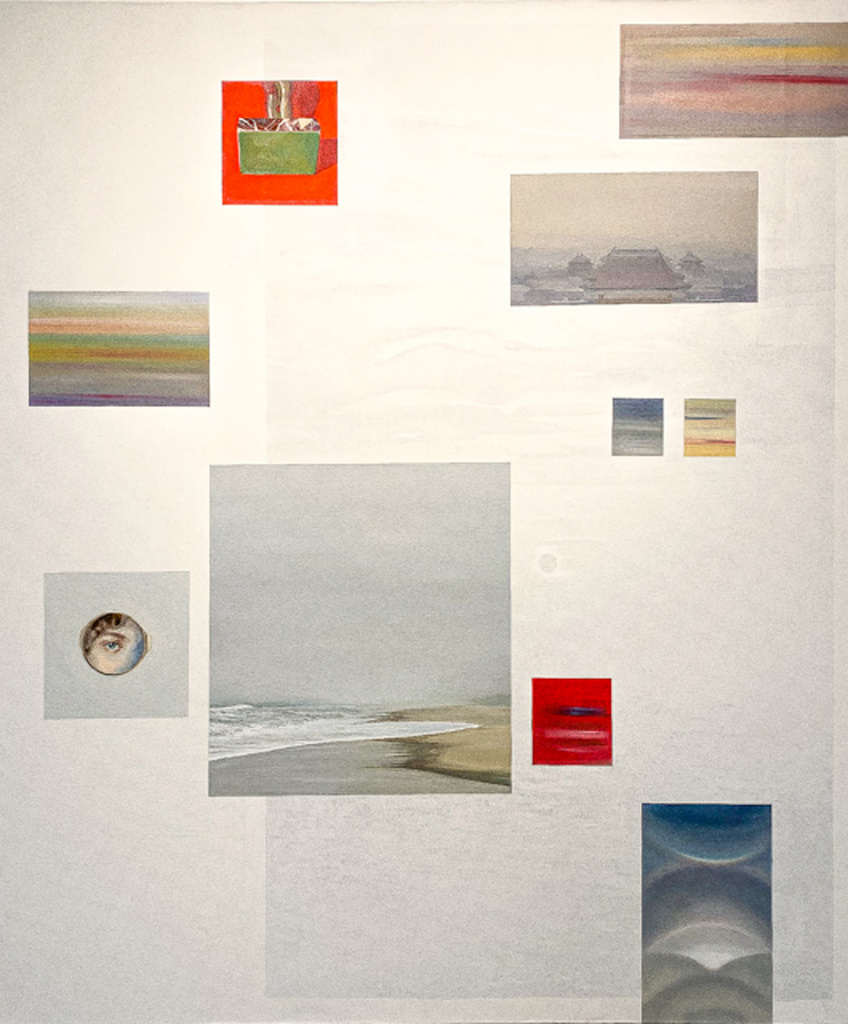
FILIO GALVEZ
Filio Galvez was born in Havana, Cuba, where he studied at the renowned National Academy of Fine Art San
Alejandro. Upon moving to Miami, he enrolled in the Visual Arts Degree program at the New School of the Arts
(NWSA).
Using digital data for aesthetic purposes by either corrupting or physically manipulating electronic devices is
a common denominator in Galvez’s practice. The attention to this operative principle, rather than the politics
of form, is the basis of the present research. The results are not those from a lab, they are expressly
subjective, necessarily subjective to lend subjectivity to a platform of communication, and they play with the
nightmare of the self-conscious data.
In his series R.I.P (Reverse Image Painting), Galvez attempts to automate the process of artistic creation. The
reference images that are reproduced are found through various search engines, always starting from an
abstraction; this process is repeated until the compositions are completed.
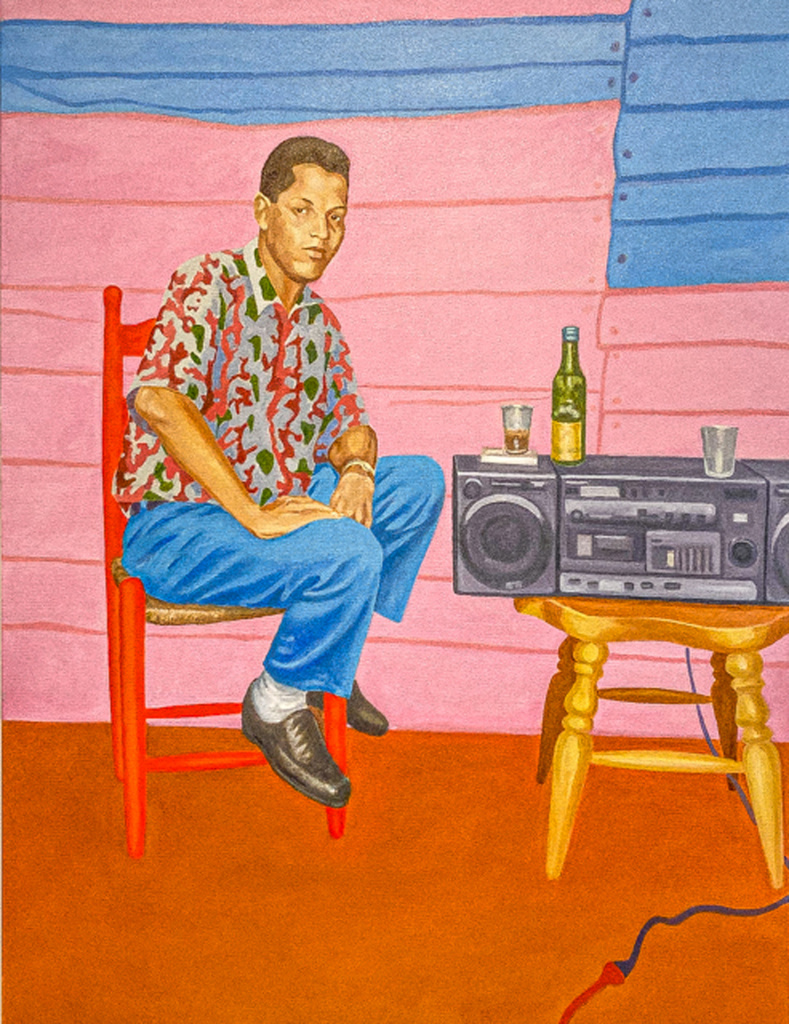
DELVIN LUGO
In Delvin Lugo’s current series of paintings Early Life in Neon, the artist revisits memories from his hometown
in Moncion, Dominican Republic. In these vibrant works, Lugo highlights positive, nurturing, and comic
aspects of the rural life his family lived prior to their emigration to the United States when he was twelve years
old.
Resourcefulness and improvisation were intertwined with his earliest expressions of identity as a gay boy
interested in fashion and the fabulous: wearing one of his mother’s earrings or having a homemade Barbie
doll are celebrated in these paintings. Highlighting the retrospectively humorous elements of these early
expressions is also essential in this series. Years before Lugo (or his family members) learned to speak
English his favorite t-shirt bore the slogan “Bitch, Bitch, Bitch!” and he proudly showcases it here. This bold
approach to life is manifested and amplified through the use of vibrant and fluorescent colors in the paintings.
To accentuate the spirit of playfulness, these paintings can also be viewed in black light. In any light, though,
they are full of delight, resilience, and tenacious joy.
Delvin attended the Maine College of Art and received a BFA from the School of Visual Arts. He currently
resides in New York City.

MARLON PORTALES
The emerging Cuban artist Marlon Portales (Pinar del Rio, 1991) graduated in 2018 from Havana’s Higher
Institute of Art (ISA) with honors. Portales’ practice is multidisciplinary and includes media ranging from
painting to installation, video art, photography, and performance. His views in the fields of politics and ideals
yield works that carry evident sociological and philosophical quests. Ultimately, through his work, he aims at
engaging the observer in a dialogue about different points of view as well as universally shared reflections.
His series Retiro Coyuntural emerged within the most intimate space-time (less exposed and known) of the
artist’s life from the end of 2019 until the present day. This series narrates from an essentially visual
perspective, events, interactions, interventions, and relationships with the spaces of his immediate context.
The works, apparently unrelated, have a strong thread that binds them together as a total idea, becoming
remnants of his everyday life.
Portales has ventured into a journey of escape and oxygenation, practically of flight, from those cultural
imperatives that his life in Cuba had imposed on his work. The works are almost a poetic documentation of
this stage where the political, religious, and social margins are lost and linked. He experiences this journey
with the notion of Homo picture, as an avid producer and consumer of images who extracts a visual residue
from each experience.
ORGE RIOS
Jorge Rios holds a BA in painting from the National Academy of Arts “San Alejandro” in Havana, Cuba. In
2021 earned his BFA at The School of the Art Institute of Chicago; he is currently enrolled in the MFA
program at Washington University in St. Louis.
The work of Jorge Rios transcends the flatness of ordinary visual language reaching the subtlety,
ambivalence, and complexity that we perceive more clearly in other art forms such as music or poetry. Rios
tries to establish through his art a link between the individual experience of reality and the totality of existence
– whether you call it God, the Truth, the Idea, the Spirit, the Da-sein, the Being, or the Nothingness… In other
words, “art for me has the mission of redeeming the being out of the mundanity of the human condition, by
stimulating what is divine, universal and eternal in it.”
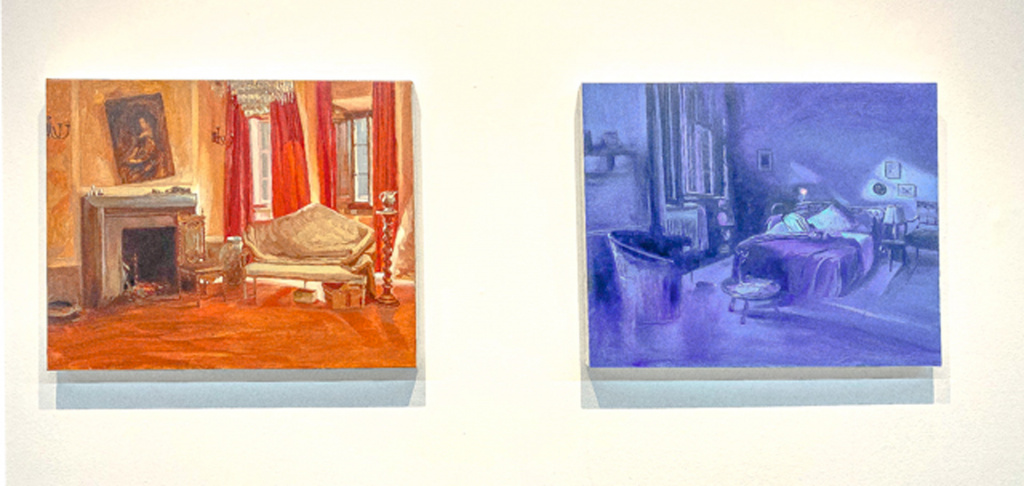
LETICIA SANCHEZ TOLEDO
Miami-based contemporary visual artist Leticia Sánchez Toledo was born in 1985 and is of Cuban and
Spanish descent. She is well-known for her personal depictions of women and scenes of women that are
influenced by her passion for movies, where color and light play key roles in evoking a certain aura or
atmosphere.
She spent her childhood learning about the world through the big screen at the nearby movie theater in the
little town where she lived. Today Leticia offers a personal view of her wishes and concerns while also
examining social, cultural, and ethnic issues that are present in the lives of women today. She does this as a
mental challenge and by using film-like frames to communicate her point of view in the social space.
ArtWorks
[supsystic-gallery id=81 position=center]
